 |
 |
 |
| |
A Liver-Targeted Acetyl-CoA Carboxylase Inhibitor Increases Fatty Acid Oxidation, Improves
Mitochondrial Function, and Reduces Bile Acids and Oxidative Stress in a Murine Model of NASH
|
| |
| |
Reported by Jules Levin
AASLD: The Liver Meeting 2017, October 20-24, 2017, Washington, DC
Jamie Bates,1 Kari E. Wong,2 David Hollenback,1 Kathy Liu,1 Adrian S. Ray,1 David G. Breckenridge1 - 1Gilead Sciences, Inc., Foster City, CA; 2Metabolon, Inc., Morrisville, NC
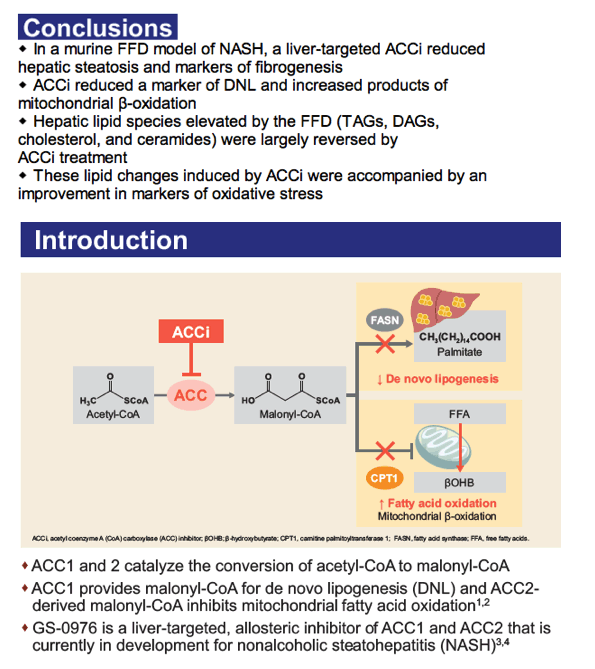
ACCi, acetyl coenzyme A (CoA) carboxylase (ACC) inhibitor; βOHB; β-hydroxybutyrate; CPT1, carnitine palmitoyltransferase 1; FASN, fatty acid synthase; FFA, free fatty acids.
------------
lipˇoˇgenˇeˇsis
(lip'o-jen'e-sis),
The production of fat as either fatty degeneration or fatty infiltration; also applied to the normal deposition of fat or to the conversion of carbohydrate or protein to fat.
Synonym(s): adipogenesis
Lipogenesis is the process by which acetyl-CoA is converted to fatty acids. The former is an intermediate stage in metabolism of simple sugars, such as glucose, a source of energy of living organisms. Through lipogenesis and subsequent triglyceride synthesis, the energy can be efficiently stored in the form of fats.
Lipogenesis encompasses both the process of fatty acid synthesis and triglyceride synthesis (where fatty acids are esterified to glycerol).[1] The products are secreted from the liver in the form of very-low-density lipoproteins (VLDL). VLDL particles are secreted directly into blood, where they mature and function to deliver the endogenously derived lipids to peripheral tissues. https://en.wikipedia.org/wiki/Lipogenesis
Fat build-up is determined by the balance between lipogenesis and lipolysis/fatty acid oxidation. In the past few years, our understanding of the nutritional, hormonal and particularly transcriptional regulation of lipogenesis has expanded greatly. Lipogenesis is stimulated by a high carbohydrate diet, whereas it is inhibited by polyunsaturated fatty acids and by fasting. These effects are partly mediated by hormones, which inhibit (growth hormone, leptin) or stimulate (insulin) lipogenesis. Recent research has established that sterol regulatory element binding protein-1 is a critical intermediate in the pro- or anti-lipogenic action of several hormones and nutrients. Another transcription factor implicated in lipogenesis is the peroxisome proliferator activated receptor γ. Both transcription factors are attractive targets for pharmaceutical intervention of disorders such as hypertriglyceridemia and obesity......https://www.ncbi.nlm.nih.gov/pmc/articles/PMC1083868/
http://www.asbmb.org/asbmbtoday/asbmbtoday_article.aspx?id=15872 Adipose tissue de novo lipogenesis: atty acids are essential macromolecular cellular constituents serving critical structural and energetic roles. Synthesis of fatty acids endogenously (known as de novo lipogenesis, or DNL, Fig. 1) is traditionally thought to serve the purpose of converting excess carbohydrates into lipids for storage, because lipid is much more energy-dense than carbohydrate and is therefore a more efficient storage form. It is increasingly clear that fatty acids and their derivatives are also important signaling molecules that affect many fundamental physiologic processes. DNL may produce lipid species with bioactivities distinct from those of lipids derived predominantly from the diet (1). Therefore, there is growing interest in the physiological role of DNL in normal biology and in disease states such as obesity, Type 2 diabetes and cardiovascular disease......Thus, growing evidence suggests that increasing adipose tissue DNL may provide beneficial health effects in contrast with the effects of DNL in liver tissue. Strategies to enhance DNL specifically in adipose tissue and to identify and administer salutary bioactive lipids may provide new therapies for metabolic and cardiovascular disease.
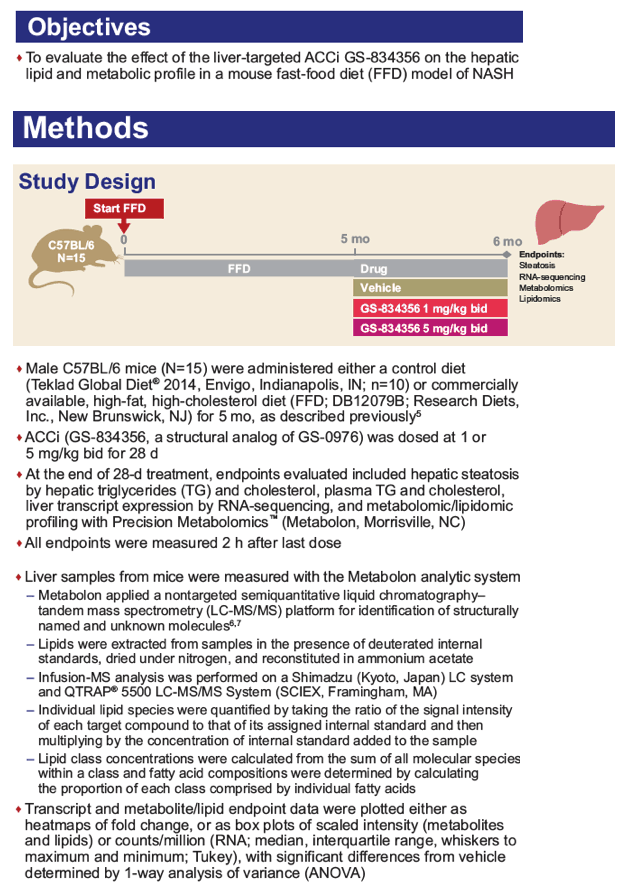
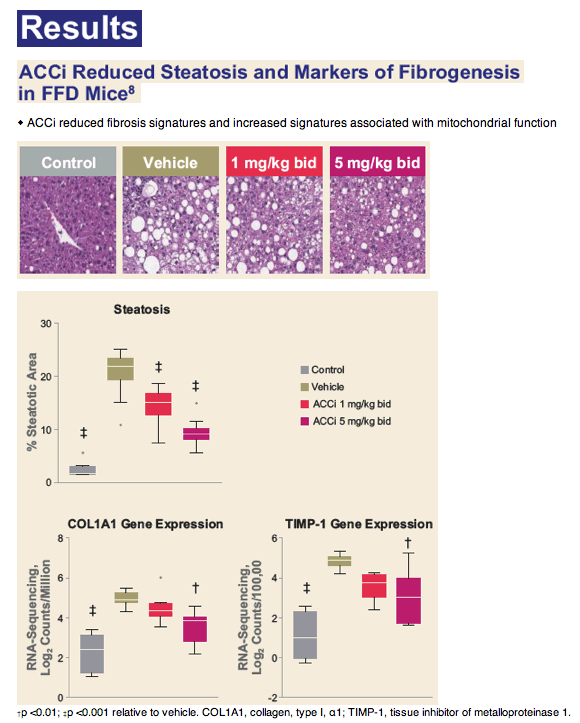
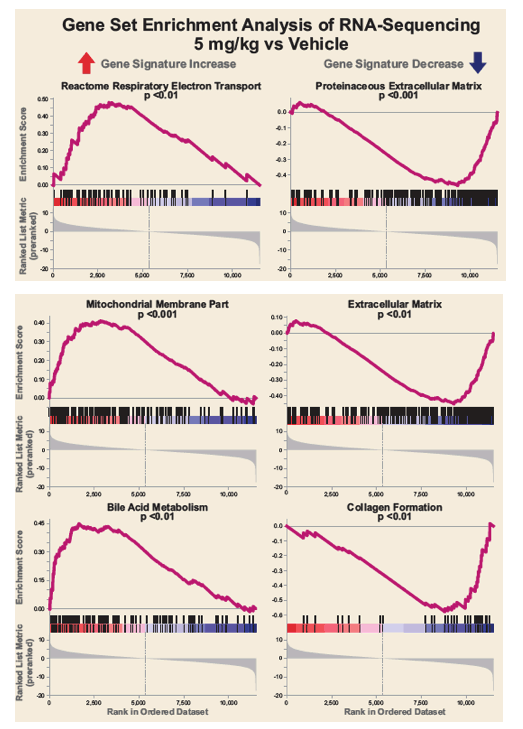
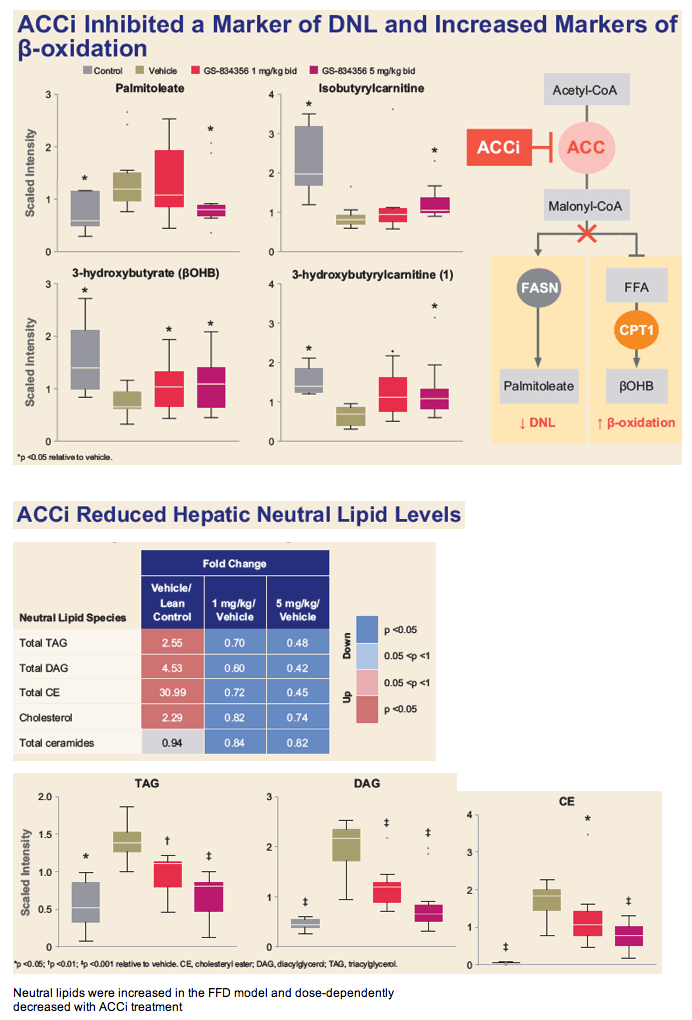
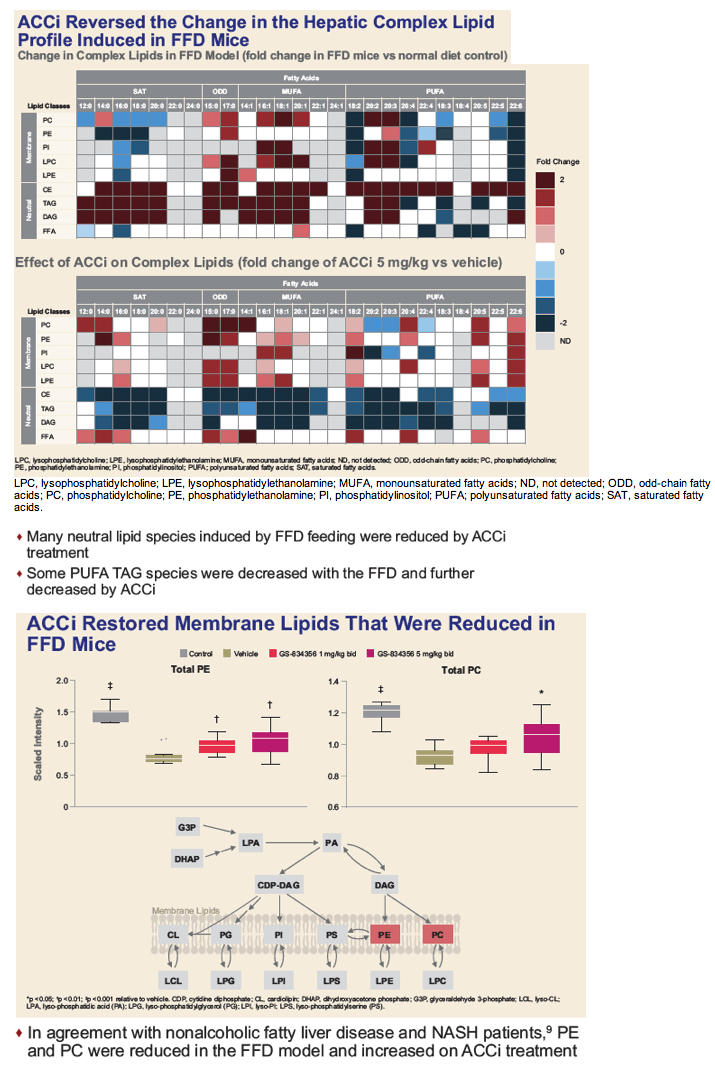
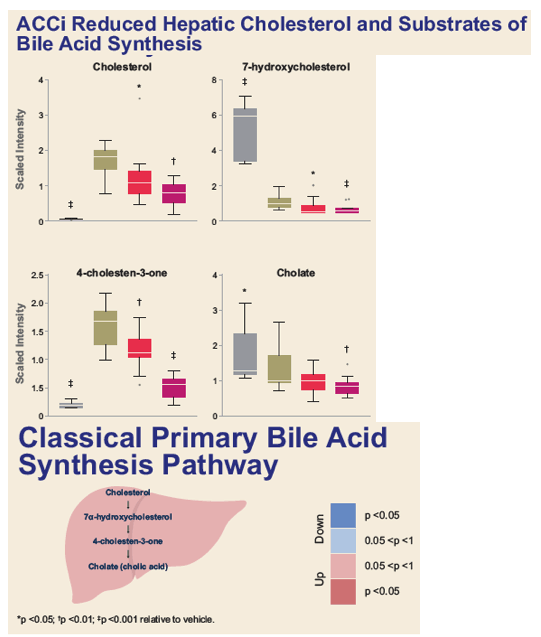
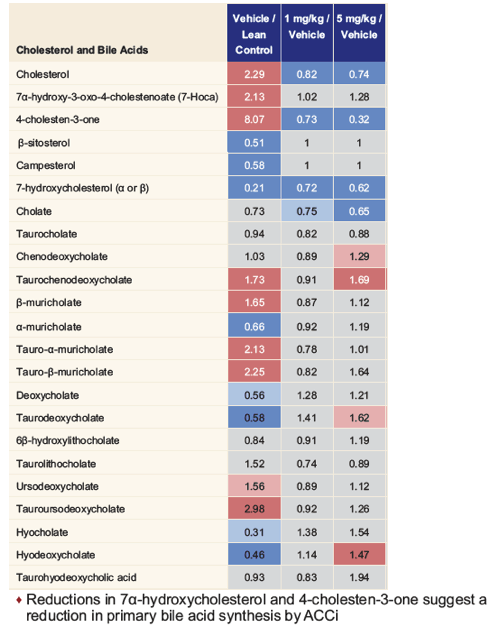
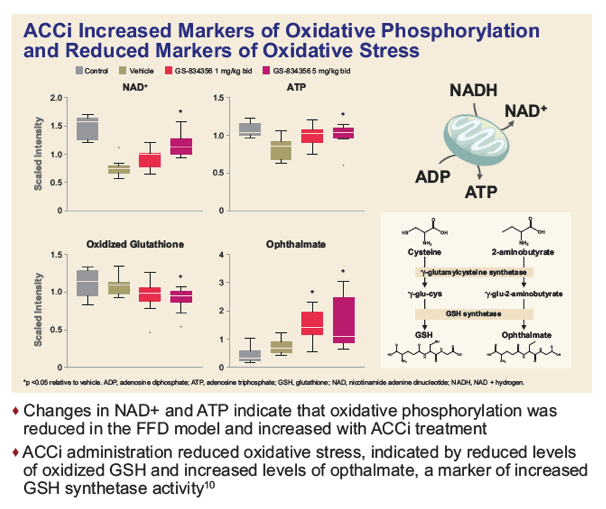
References
1. Abu-Elheiga L, et al. Proc Natl Acad Sci USA 2005;102:12011-6; 2. Mao J, et al. Proc Natl Acad Sci USA 2006;103:8552-7; 3. Harriman G, et al. Proc Natl Acad Sci USA 2015;E1796-805; 4. Lawitz EJ, et al. EASL 2017, abstr LBO-002; 5. Charlton M, et al. Am J Physiol Gastrointest Liver Physiol 2011;301:G825-34; 6. Evans AM, et al. Anal Chem 2009;81:6656-67; 7. Evans AM, et al. 2014;4:132; 8. Bates J, et al. EASL 2017, poster FRI-352; 9. Puri P, et al. Hepatology 2007;46:1081-90; 10. Soga T, et al. J Biol Chem 2006;281:16768-76.
|
| |
|
 |
 |
|
|